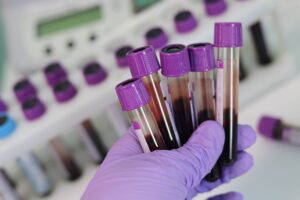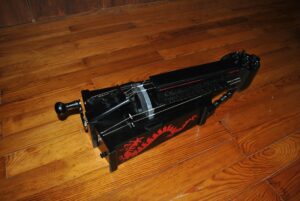Scientific studies abound when it comes to demonstrating the effects of music on our health.

Image by Pixabay
There are few people in disagreement that music has healing properties. In this article, I refer to a study titled “Can music influence the longevity of human blood cells?” The study was conducted at the CymaScope laboratory of John Stuart Reid with the assistance of Professor Sungchul Ji of Rutgers University.
In the article, Reid refers to a belief held by Pythagoras that music can be used in place of medicine as a contribution to health. Many since then have stood by that belief and found methods of using music as a healing tool. Reid’s study was funded by Experiment.com and various other organizations (all listed in the article).
The Experiment:
- Initial experiments were conducted in 2018 that determined a need for this study.
- Whole blood type 0+ from a female donor was used in the experiment. (Details of process outlined in Reid’s article).
- A control sample of the blood was placed in in a Faraday cage so no outside source could “influence” it.
- Other samples were prepared and placed in a laboratory incubator with speakers that played a variety of musical genres and concert pitches (A=440, A=444, and A=432).
- Each sample was subjected to the music/sound for 20 minutes (control sample was subjected to a quiet environment at 25 dBA). The music chosen included: classical orchestral, solo classical piano, classical harp, rap, pop, guitar, male vocal, female vocal, vocal musical intervals, Dance-Techno-House, a sound therapy device, gong, spiritually oriented chant, white noise at 85 dBA, and white noise at 105 dBa.
- Additional “back-tracks” were added to the female voices that included dominant low frequencies. This was also done for the Dance-Techno-House and other pop music track samples.
- Immediately following the 20-minute test period, a preparation process was completed (details in the article) for a blood cell count of each sample.
The Results:
- Initial results matched those found in 2018 “showing significant differences in ratios in the red blood cell counts between the music environment and the quiet environment.” (Reid, Testing a 2,500-year old hypothesis)
- The musical samples and sounds all showed a significant increase in the number of viable red blood cells.
- No one concert pitch stood out as better (or worse) than the others.
- The highest number of viable red blood cells counted came as a result of a sample immersed in the sound therapy device. A sound prescription level called “cell regeneration” was dialed in on the device for that 20-minute sample.
- In all musical examples (some more significantly than others), a significant increase of viable red blood cell count was noted.
- The white noise at 105 dBA destroyed almost all the viable red blood cells.
- It was noted that “The low frequency sounds may contribute to a mechanism resembling that of the in vivo environment, in which low frequency pressure, provided by each heartbeat, aids haemoglobin molecules to uptake oxygen. If this proves to be the case, the increase in oxygenation of the red blood cells (that are in the hypothetical transition state), acquired from dissolved oxygen in the in vitro whole blood, could account for the cells being rejuvenated.” (Reid)
What are the implications of this study?
I found it interesting that the experiment included three different concert pitches (A=432, A=440, and A=444). That they found no differences in viable red blood cell counts was interesting but not surprising. If you’ve read my most recent article on Concert pitch and the Hebrew letters, I explain how it’s nearly impossible to stay within one concert pitch. In my mind, intent weighs as much into the recipe as the actual pitch. To read more about that, I’ve gone into much greater detail about how intent “rules” in the article, Thoughts, Intents, Action!.

Image by Pixabay
Another interesting item to note from this study is the presence of a low dominant frequency in some of the samples and how those had more of an effect than other musical samples. The research team’s explanation appears very plausible to me. It has everything to do with entraining with our heart. Well, those are my words for it. In Renaissance and pre-Renaissance music, a “pedal tone” or “drone” was the source of an accompanying note via an instrument called a “hurdy gurdy.” Simply put, a pedal tone is a constant/steady note generally of a lower frequency than the melody. To learn more about the hurdy gurdy, CLICK HERE to read a partial article that provides some basics. If you register for the site, the entire lesson will open up for you.
For those who’ve listened to my music, all of it has a lower drone note in the bass. Honestly, why I chose to do that, I’m not sure. It just feels right to do it that way. So, I find it interesting that Reid’s team discovered that a lower consistent drone note increased the viable red blood cell count. This may be one reason why people who listen to my music find it healing. That added with my healing intention, increases the likelihood that this music “be” healing for people. In water memory studies, scientists show how intent affects water. Blood is also a liquid and our bodies are made of at least 70% water. It would only make sense that music infused with the intent for healing really does affect people.
Another item to note is the sound healing device used as part of the experiment. It had the highest viable red blood cell counts from all the samples. Not much more is said about that but I find it interesting. This gives merit to sound healing practices, of which anyone who creates music for the purposes of it being healing, should fit into “sound therapy” category. Although this is speculation at this point, I found the results from Reid’s study to be promising for those of us who create healing music.
Conclusion
Although this study involved one blood sample, it’s promising because there IS a difference between the control and music samples. My guess is that when Reid’s team conducts a full-blown study, this scenario will be repeated. Not only will it raise more questions, especially “why does this work?,” but it lends validity to those of us who practice sound healing techniques.
Del Hungerford, 2019
[mailerlite_form form_id=2]

